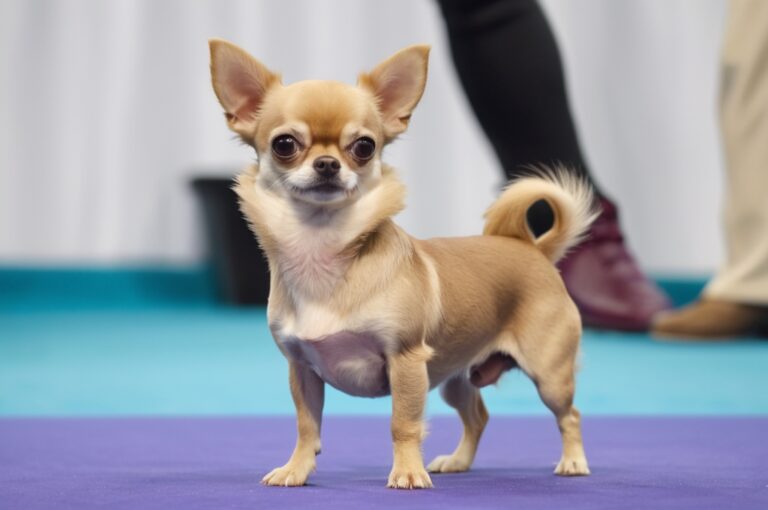How often should I breed my Chihuahua for her well-being?

When breeding Chihuahuas, it’s essential to consider the frequency and timing of each breeding cycle to protect the mother’s health and ensure her long-term well-being. Responsible breeding practices prioritize the health and recovery of the mother, focusing on her physical and emotional needs.
1. Recommended Breeding Frequency for Chihuahuas
Breeding a Chihuahua too often can lead to physical and emotional strain. To maintain her well-being, it’s crucial to follow recommended guidelines that take into account her age, recovery needs, and overall health status.
1.1 Ideal Breeding Age Range
The best age range for breeding Chihuahuas typically falls between two and five years, which allows them to be physically mature and ready to handle pregnancy. Breeding a Chihuahua too early, before her body has fully developed, can lead to complications during pregnancy and delivery. Likewise, breeding beyond the age of five to six can increase health risks, as older Chihuahuas are more prone to complications during and after pregnancy. By choosing an appropriate age range, breeders can ensure the Chihuahua has the physical resilience needed for pregnancy and motherhood.
1.2 Frequency Between Breeding Cycles
Allowing adequate time between breeding cycles is essential for the Chihuahua’s recovery. Breeding cycles should be spaced at least one to two heat cycles apart, which generally means around 12-18 months of rest between pregnancies. This recovery period allows her body to regain strength and prevents reproductive strain. Breeding too frequently without this recovery period can lead to health issues, reducing her quality of life. Monitoring the time between cycles helps support her overall health, ensuring that each pregnancy is safe and manageable.
1.3 Total Number of Breeding Cycles in a Lifetime
Limiting the total number of breeding cycles is a vital consideration for a Chihuahua’s long-term health. Responsible breeders typically recommend no more than two to three pregnancies over a Chihuahua’s lifetime to reduce stress on her body. Each pregnancy takes a toll, and limiting the number of litters she carries helps preserve her vitality and health. Exceeding this guideline can lead to exhaustion and complications, which may affect both her and her puppies. Setting a limit on total pregnancies protects her from long-term reproductive strain and promotes a healthier, happier life.
1.4 Signs That a Chihuahua Should Not Be Bred Again
It’s essential to watch for signs indicating that a Chihuahua should not be bred again, as repeated pregnancies can lead to physical and emotional exhaustion. Symptoms such as fatigue, reluctance to nurse, prolonged recovery, or health issues following pregnancy may indicate that she has reached her breeding limit. Recognizing these signs early allows breeders to make informed decisions and prioritize her well-being, potentially retiring her from breeding to avoid further stress on her body. By paying attention to these indicators, breeders can make choices that safeguard her health.
| Breeding Factor | Guideline | Notes |
|---|---|---|
| Ideal Age Range | 2-5 years | Ensures physical maturity and resilience |
| Frequency Between Cycles | 12-18 months apart | Allows time for recovery |
| Lifetime Breeding Limit | 2-3 pregnancies | Prevents long-term reproductive strain |
| Signs to Stop Breeding | Fatigue, prolonged recovery | Indicates need to prioritize health |
2. Importance of Rest and Recovery Between Litters

Rest and recovery between litters are crucial for a Chihuahua’s health. Frequent pregnancies without adequate rest can strain her body, reduce immunity, and affect her emotional well-being.
2.1 Physical Recovery Needs
After each pregnancy, a Chihuahua’s body requires time to heal and recover, as pregnancy and nursing demand significant physical resources. Giving her ample time to rest allows her muscles, organs, and reproductive system to regain strength. Without this period of recovery, the strain from repeated pregnancies can increase her risk of health complications. Ensuring adequate recovery time after each litter supports her physical health and longevity, making future pregnancies safer and more manageable.
2.2 Impact of Frequent Breeding on Health
Frequent breeding without rest increases health risks for Chihuahuas, such as lowered immunity and fatigue. Back-to-back pregnancies can lead to complications during labor, as her body may lack the strength to handle consecutive pregnancies. Over time, these risks can accumulate, reducing her overall vitality and increasing the chances of complications for her and her puppies. By maintaining rest periods, breeders can reduce these risks and support her long-term health.
2.3 Emotional and Mental Well-being
A Chihuahua’s emotional well-being is just as important as her physical health. Breeding too frequently can cause stress, affecting her mood and behavior, especially if she doesn’t have time to bond with her family between litters. Time off from breeding allows her to relax, socialize, and build confidence, reducing any stress associated with repeated pregnancies. This period of calm contributes to her mental health, helping her remain a well-adjusted and happy companion.
2.4 Maintaining Overall Vitality
The Chihuahua’s overall vitality depends on adequate rest and recovery. Regular rest periods allow her to maintain her energy levels, stay physically strong, and avoid long-term fatigue. Breeding with frequent rest between litters preserves her health and stamina, ensuring she remains a happy, active dog well into her senior years. Supporting her vitality through rest promotes a longer, healthier life and enhances her quality of life outside of motherhood.
3. Consulting a Veterinarian for Breeding Guidance

Veterinary guidance plays a key role in determining a safe and healthy breeding schedule for a Chihuahua. Regular checkups, health assessments, and professional advice ensure that her well-being remains a top priority throughout her breeding years.
3.1 Health Assessments Before Each Breeding
Conducting health assessments before each breeding is essential to ensure the Chihuahua is physically ready for pregnancy. Vets can check for any underlying conditions, monitor her reproductive health, and assess her fitness for pregnancy. These assessments help prevent complications, confirming that she is healthy enough to carry a litter. Regular vet checks provide a safeguard, ensuring her health is prioritized before each pregnancy.
3.2 Monitoring Signs of Reproductive Health
Routine monitoring of her reproductive health is crucial for detecting issues that could impact her pregnancies. Signs like irregular cycles, discharge, or changes in behavior may indicate reproductive health concerns that require attention. Regular checks and observations allow breeders to catch these issues early, ensuring that each pregnancy is safe and manageable. Monitoring her reproductive health with veterinary guidance supports her well-being and ensures her body is prepared for breeding.
3.3 Advice on When to Stop Breeding
Veterinarians can provide valuable advice on when to retire a Chihuahua from breeding, considering factors such as age, health, and previous pregnancies. If a Chihuahua has experienced complications or shows signs of fatigue after pregnancies, a vet may recommend that she be retired from breeding. This professional guidance helps owners make responsible decisions, prioritizing her health over additional litters. A vet’s advice on breeding limits supports her long-term well-being, helping prevent health issues associated with excessive breeding.
3.4 Alternative Ways to Ensure Her Well-being
For Chihuahuas that are retired from breeding, there are alternative ways to ensure their well-being and maintain their health. Activities such as regular exercise, socialization, and mental stimulation help support her overall happiness and keep her engaged. For those who will no longer breed, these alternatives help ensure a fulfilling life, allowing her to thrive without the demands of motherhood. Providing enriching experiences keeps her active and content, supporting her physical and emotional health in a balanced way.
FAQ
Q1: What is the ideal age range for breeding a Chihuahua?
The best age range for breeding is between two and five years, as this ensures physical maturity and reduces the risks associated with early or late pregnancies.
Q2: How long should a Chihuahua rest between pregnancies?
Allowing 12-18 months between pregnancies is recommended to give her body time to recover fully and maintain her health.
Q3: How many times should a Chihuahua be bred in her lifetime?
To protect her health, it’s advisable to limit her breeding to two or three litters, ensuring she avoids long-term reproductive strain.






